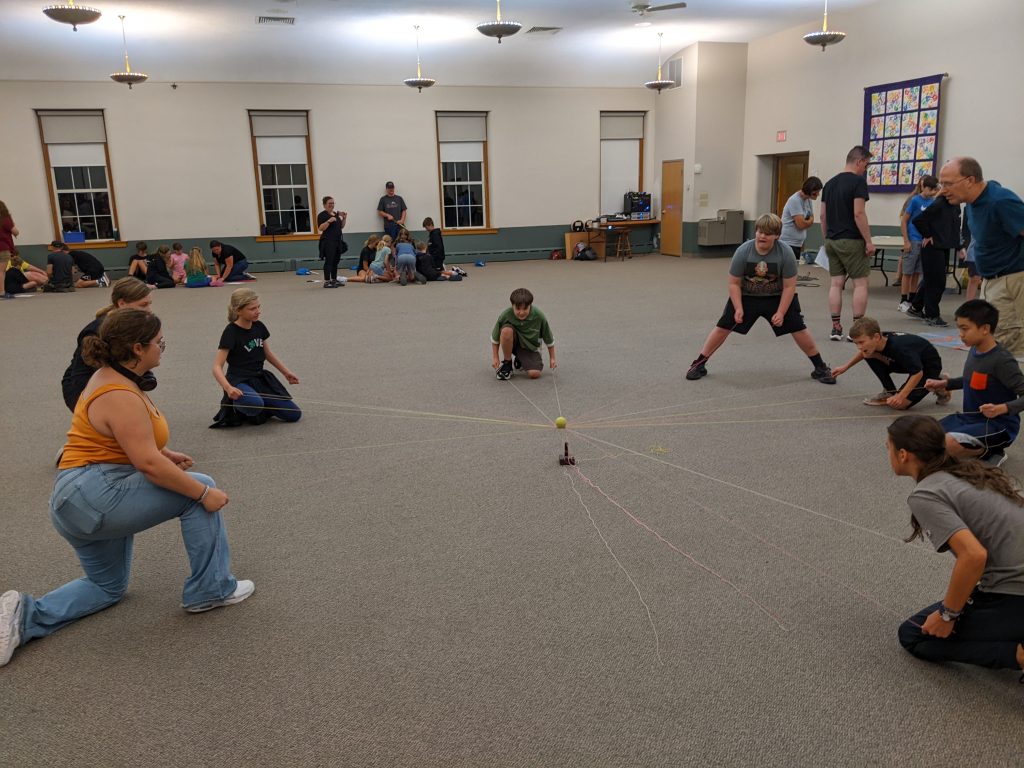by Michelle Curtis
I don’t like to read books alone. So when Brooke Martin, Pastor of Youth & Community Formation for Mosaic Conference, invited me to join a book study group for The End of Youth Ministry? by Andrew Root, I jumped at the chance.
The book study group, comprised of youth Pastors and leaders, gathered around back porches and youth rooms to discuss a few chapters every other week. We lamented the difficulties of leading youth ministries in 2023. We shared how much we love our youth and how much we want them to know Jesus’ love. We waded through the philosophical parts of the book, trying to make sense of how they apply to middle schoolers.
Some of the biggest takeaways felt like both “aha!” moments and also a reminder that youth ministry should not be different than any other ministry in pointing people to the core of our faith. We, with Paul, proclaim Christ and him crucified. Root’s writings challenged us to help youth walk toward the cross, not away from it.

Instead of focusing primarily on fun, Root told how walking with youth toward the suffering they see and experience can help us all to see our stories as part of Jesus’ story of death and resurrection. When we walk toward suffering together, we can start to see and name how God brings new life out our death experiences. The whole book is based on how a youth group was transformed by the experience of gathering together in a hospital waiting room when one of their members almost died. There they had an opportunity to hear stories of how God brought life out of death in the lives of two adults in their church.
Among our book study group of youth pastors and directors, I was the only one whose job title didn’t formally include youth or faith formation. I serve as co-Pastor of Ambler Mennonite Church along with my husband, Jacob, and we’ve shared the role of starting a monthly youth group over the last few years.
Sometimes I feel jealous of churches with the staff and size to gather their youth together every Sunday and Wednesday. But I’ve realized that one of the gifts of our small church is that we are intergenerational by necessity. When we put together boxes of food for our neighbors each December, we intentionally invite the youth, but the whole church has to come together to make it work. We’re too small to do otherwise.
When my parents were in youth group, it was their whole social network. They had activities most days of the week. Instead of longing for that past, Root encourages us to understand what has shifted over the last few decades. Instead of trying to compete with all the extracurriculars filling the lives of our youth, Root encourages us to see clearly what youth ministry is for: joy. It’s for helping youth to experience the joy in community that grows out of walking through suffering together and seeing how God brings life out of death.
We’re all still chewing on the book’s implications for each of our ministries. I’m thinking more about how to walk with our youth toward the cross, and how to help them find themselves in God’s story.

To be clear, Root is not advocating that we do away with fun. He ends the book in a Dairy Queen with ice cream and friendship. In that spirit, we ended our book study with coffee and Yum-Yum donuts, celebrating the relationships that we’ve built through these weeks together.

Michelle Curtis
Michelle Christian Curtis is co-pastor of Ambler (PA) Mennonite Church with her husband, Jacob.
The opinions expressed in articles posted on Mosaic’s website are those of the author and may not reflect the official policy of Mosaic Conference. Mosaic is a large conference, crossing ethnicities, geographies, generations, theologies, and politics. Each person can only speak for themselves; no one can represent “the conference.” May God give us the grace to hear what the Spirit is speaking to us through people with whom we disagree and the humility and courage to love one another even when those disagreements can’t be bridged.
